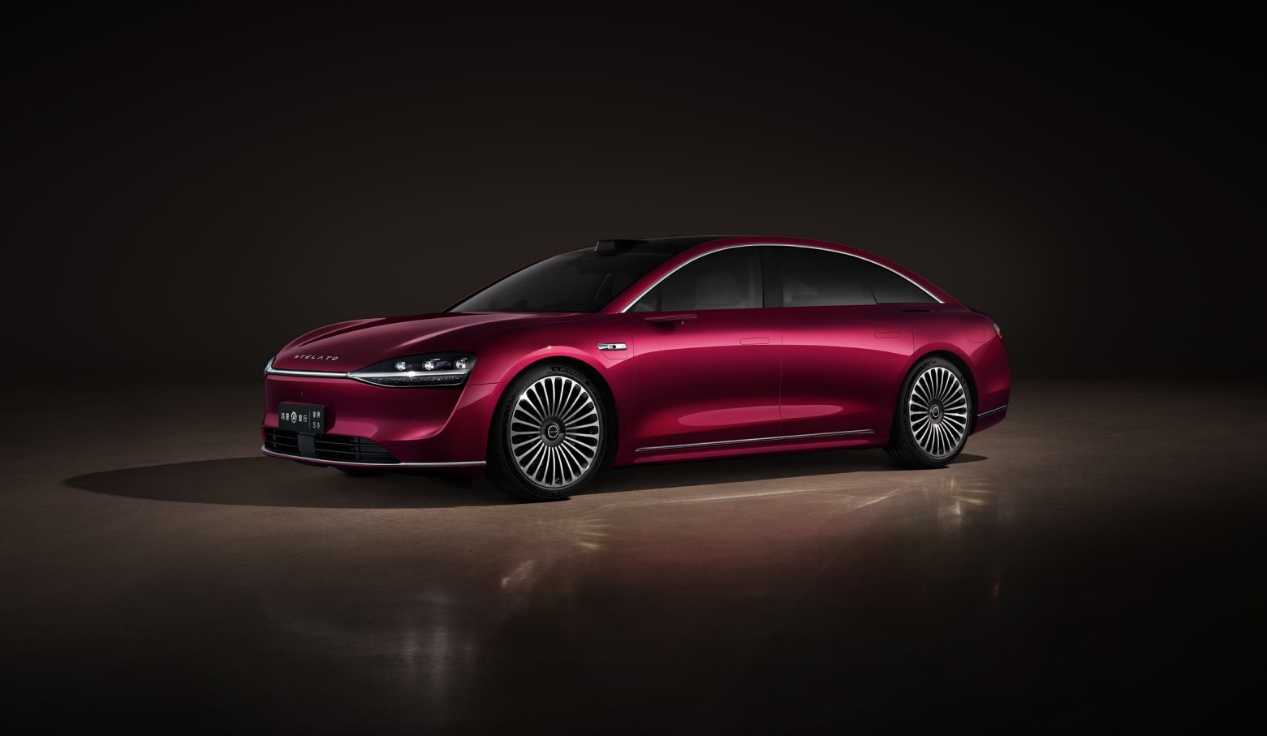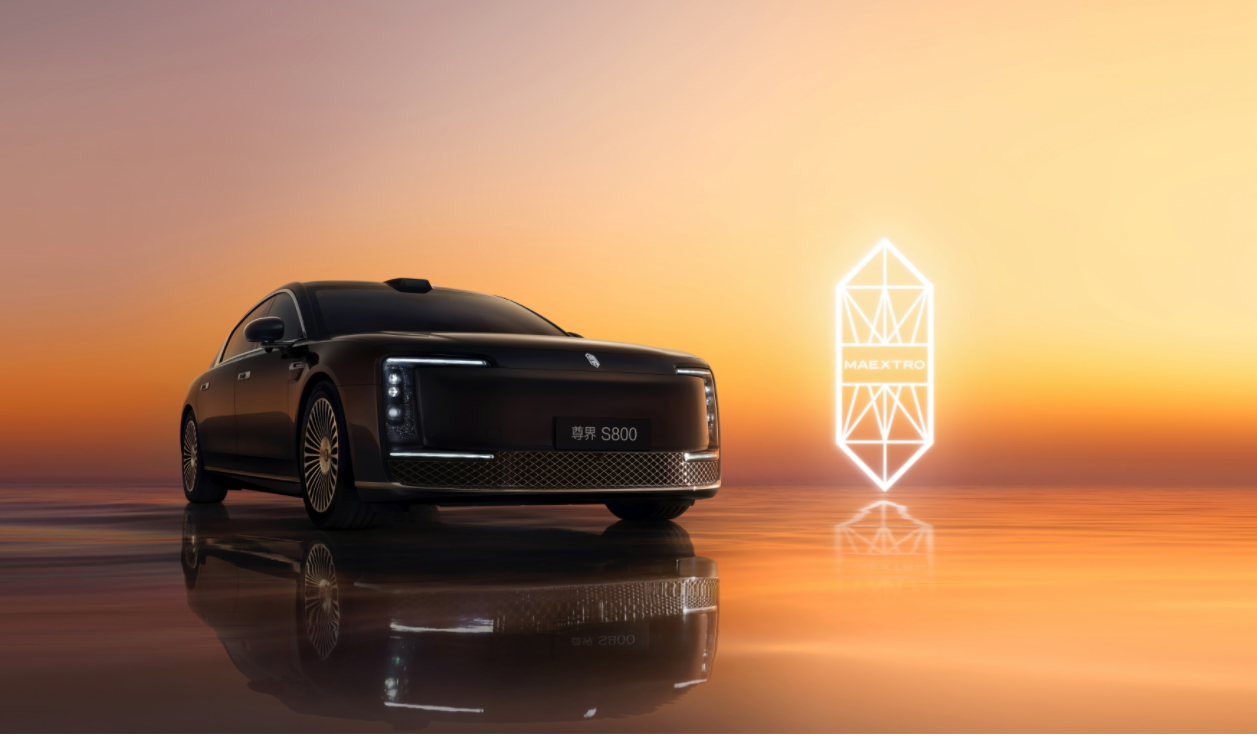
At the February 20, 2025 HarmonyOS tech launch, rotating chairman Richard Yu declared "the awakening moment for smart vehicles," unveiling the Zunjie S800 with six breakthrough technologies. From AITO to Luxeed, Xiangjie, and Zunjie, Huawei’s "Four Realms" now span mainstream segments. With SAIC’s pending "Shangjie" trademark, Huawei’s ecosystem is evolving from quadrants to ubiquity—a decisive move in its quest for smart mobility supremacy.
The logic of Huawei
Huawei's ecological expansion is an industrial reconstruction led by technology and supported by channels. The core logic is to establish differentiated barriers through technological innovation and reshape industry rules via ecological integration.
The release of the Zunjie S800 showcases Huawei's technological prowess. Equipped with the Touring Dragon platform, it achieves an all-domain fusion architecture for the first time, reducing vehicle response time to the millisecond level and enabling stable control in extreme scenarios, such as maintaining stability during a tire blowout at 120km/h. The ALPS Cockpit 2.0, featuring dual-layer air circulation and dual negative oxygen ion systems, purifies the cabin environment, eliminating odors within 20 minutes, surpassing traditional luxury brands in mechanical performance.


These technological breakthroughs serve as both the means for Huawei to attract automaker partnerships and the tools to compete for ecological dominance. For example, Huawei's ADS 3.0 intelligent driving system achieves NOA in urban areas without map reliance. Its lidar and BEV + Transformer algorithm offer superior perception accuracy and iteration speed compared to most competitors.
Technology output is the first step in Huawei's ecological integration. Establishing a unified standard via the AITO Alliance creates more value by mirroring the "Android model."
Unified Tech Standards: Galaxy Communication integrates terrestrial and satellite networks, while HarmonyOS enables seamless device interoperability. Channel Synergy: Over 990 Huawei Experience Stores serve as traffic funnels for partner vehicles, with AITO’s success partly attributable to this retail muscle. Brand Premiumization: High NPS scores for AITO vehicles stem from Huawei’s brand equity, with HarmonyOS cockpits and ADS autonomous driving as key differentiators.
The AITO series achieved 389,000-unit sales in 2024, with M7 and M9 models leading their segments. This commercial success has made Huawei’s ecosystem an irresistible proposition, eroding traditional automakers’ resistance to ceding technological sovereignty. The Zunjie S800 exemplifies this shift: Jianghuai Automobile handles manufacturing while Huawei contributes core technologies like the Turing chassis, Angel Seat safety system, and Whale Battery 2.0. Expanding partnerships now cover diverse price segments while mitigating Huawei’s market risks.
Value chain reconfiguration and competitive landscape reshaping
The ripple effects extend beyond partnerships, reshaping supply chains, market dynamics, and consumer perceptions.
By providing full-stack solutions (intelligent driving, cockpit systems, powertrains), Huawei is reducing automakers to manufacturing integrators. This model slashes R&D costs but fuels fears of "Huawei dependency"—OEMs risk becoming contract assemblers if the tech giant monopolizes technical standards.
Internally, resource allocation imbalances plague the HarmonyOS alliance—while AITO dominates sales, the Luxeed brand (co-developed with Chery) faced delivery bottlenecks due to insufficient Huawei support.
Competitors are deploying counterstrategies: BYD’s vertically integrated approach features dual-system coexistence of its self-developed YunNian chassis and Huawei’s Qiankun ADAS in the Leopard 5 Intelligent Edition. NIO counters with battery-swap infrastructure alliances to offset Huawei’s ecosystem clout.
HarmonyOS Intelligent Mobility has demonstrated explosive growth, with 43,813 vehicles sold year-to-date as of February 16, securing its position as the top-selling new energy brand. The AITO M9 maintained its seven-week reign as the premium segment champion (50万+ price tier). Ecosystem expansion accelerated dramatically on February 21 when SAIC Motor and Huawei inked a comprehensive partnership spanning vehicle R&D, manufacturing, supply chain management, and sales operations.


However, skepticism emerges as industry voices warn that "ubiquitous Huawei solutions equate to no competitive advantage." If automakers homogenize their strategies with Huawei-backed technologies, differentiation may collapse into price wars, eroding ecosystem value. Seres, Huawei’s earliest automotive partner, accumulated losses of 9.835 billion yuan over four years before achieving profitability in 2024. New entrants to the HarmonyOS alliance face even steeper challenges in monetizing hardware sales alone, intensifying pressure to explore software subscriptions and data services as alternative revenue streams.
Huawei’s ambitions clearly extend beyond being a mere "enabler." Through its Alliance, the company aims to consolidate influence over data gateways and technical standards in smart vehicles, ultimately positioning itself as the "invisible operating system" of the intelligent automotive era. The endgame of this strategic play may involve redefining coexistence boundaries between "Huawei-ization" and "de-Huawei-ization" to forge a more intricate ecosystem.

 Room 1104,Block B,JingBan Building,6 Middle Beisanhuan Road,Xicheng District,Beijing
Room 1104,Block B,JingBan Building,6 Middle Beisanhuan Road,Xicheng District,Beijing
 (8610)62383600
(8610)62383600
 quanqixiang@carresearch.cn
quanqixiang@carresearch.cn
 京公网安备:11010202007638号|京ICP备17032593号-2|Report illegal and bad information:010-65993545-8019 jubao@carresearch.com
京公网安备:11010202007638号|京ICP备17032593号-2|Report illegal and bad information:010-65993545-8019 jubao@carresearch.com
Legal support:Beijing Yingke Law Firm|All rights reserved, DO NOT reproduce without permission